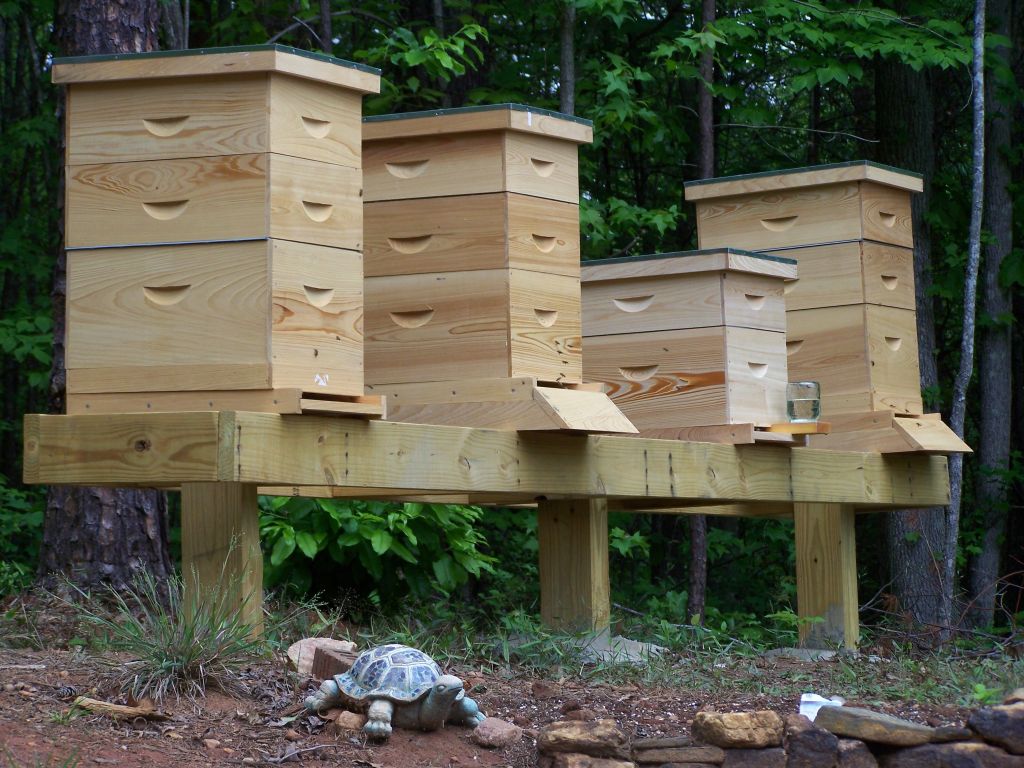Beekeeping: A Guide to Organizing Your Hive
Keeping bees can be a rewarding and fulfilling endeavor, whether you’re a seasoned farmer or new to rural living. However, successfully managing a beehive requires careful organization and attention to detail. In this article, we will provide you with valuable insights on how to effectively organize your hive for maximum productivity and the well-being of your bees.
1. Choosing the Right Hive Design:
The first step in organizing your beekeeping operation is selecting an appropriate hive design. There are several options available, including Langstroth hives, top-bar hives, and Warré hives. Each design has its own advantages and disadvantages, so it’s important to research and choose one that suits your needs.
2. Hive Placement:
Once you’ve decided on the hive design, consider where to place it on your property. Ideally, the hive should be situated in a sunny location with some shade during hotter parts of the day. Additionally, ensure that there is ample space around the hive for easy access during inspections and maintenance tasks.
3. Establishing Bee Territory:
Bees rely heavily on landmarks to find their way back home after foraging trips. To help them navigate easily, create bee-friendly surroundings by planting flowers rich in nectar nearby. This not only provides sustenance but also helps establish territorial boundaries for your bees.
4. Proper Storage of Equipment:
To maintain an organized apiary, it’s crucial to have dedicated storage space for all beekeeping equipment such as frames, supers (boxes), smokers, veils etcetera.. Having designated areas ensures that everything is readily accessible when needed while keeping items protected from damage or loss due to weather conditions or pests.
5. Developing a Record-Keeping System:
Effective record-keeping is essential for successful beekeeping management.
Maintain detailed records about each colony’s health status; note any treatments applied or changes made within the hive. This information helps track progress, identify potential issues, and make informed decisions to mitigate risks.
6. Hive Inspection Schedule:
Create a regular inspection schedule to monitor the health and progress of your colonies. During inspections, check for signs of disease or infestations, assess honey production levels, and ensure that the queen is laying eggs as expected. Maintaining a consistent inspection routine allows you to address any problems promptly.
7. Harvesting Honey:
When it’s time to harvest honey from your hive, having an organized system in place makes the process efficient and minimizes stress on both you and the bees.
Invest in appropriate extraction equipment such as honey extractors, strainers, and storage containers beforehand.
Label each jar with the date and hive it came from so you can keep track of individual harvests.
8. Equipment Maintenance:
To ensure longevity and optimal performance of your beekeeping equipment, establish a maintenance routine.
Regularly clean frames, supers, veils etcetera., removing wax buildup or propolis residues that might impede functionality.
Repair or replace damaged components promptly to avoid compromising hive integrity.
9. Pest Management:
Pests like Varroa mites can wreak havoc on beehives if not properly managed.
Implement integrated pest management practices by regularly monitoring mite levels using sticky boards or alcohol washes.
Employ treatments when necessary but always follow safe practices to minimize harm to bees.
10. Feeding Bees:
During periods of nectar scarcity (e.g., winter months), it may be necessary to provide supplemental feeding for your bees.
Organize feeding stations with sugar water or pollen substitutes in designated areas close to hives for easy access by hungry colonies.
11. Networking with Local Beekeepers:
Connecting with other local beekeepers is invaluable for sharing knowledge, experiences,
and troubleshooting common challenges together.
Join local beekeeper associations or attend workshops where you can learn from experienced individuals who have been keeping bees in your area.
12. Continuous Learning:
Beekeeping is an ever-evolving practice, and there’s always something new to learn.
Stay updated by reading books, subscribing to beekeeping journals, or participating in online forums where you can interact with fellow beekeepers and experts.
By organizing your hive effectively, you’ll create a harmonious environment for your bees while making the management process more efficient for yourself. Remember that each beehive is unique, so adapt these organizational tips to suit the specific needs of your colonies. Enjoy the journey and reap the sweet rewards of successful beekeeping!


Leave a comment